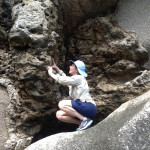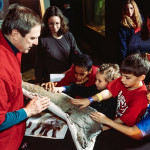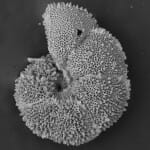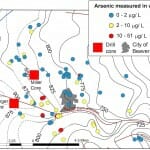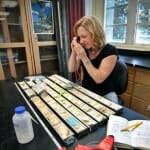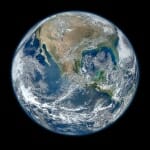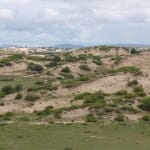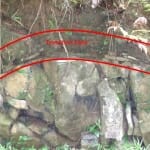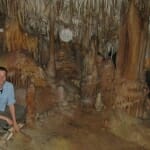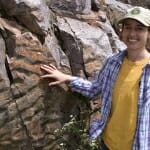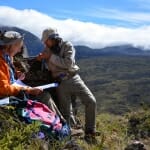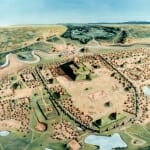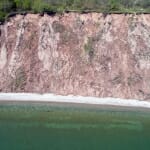Tag Geology
Fossil corals point to possibly steeper sea level rise under a warming world
Newly uncovered evidence from fossil corals found on an island chain in the Indian Ocean suggests that sea levels could rise even more steeply in our warming world than previously thought.
Exceptional meteorite, plowed up from a Dane County field, finds new home in UW Geology Museum
The hunk of iron weighs in at nearly 110 pounds, is Wisconsin's 15th classified meteorite, and is the first ever recorded in Dane County.
Remembering Klaus Westphal, longtime former director of the UW Geology Museum
Westphal's legacy of public engagement in the sciences lives on at the museum and across UW–Madison.
UW researchers working to improve and simplify models for how PFAS flows through the ground
Researchers found that several factors have a major influence on where and how long harmful PFAS chemicals stay locked in the ground before flowing below the water table.
Ancient example of modern global warming was too hot for tiny, important ocean creatures
During another time in which Earth warmed rapidly in conjunction with a spike in atmospheric carbon similar to our modern climate, seawater temperature and chemical changes decimated an important piece of the food web in the tropical Pacific Ocean.
Bird’s-eye view of geology using drones offers new way to protect groundwater
Researchers at the Wisconsin Geological and Natural History Survey are spending a little less time on the ground and more time in the air — looking at the ground. What they're finding could help improve water quality.
Storing carbon dioxide underground may be feasible for helping achieve climate goals
A new study shows that underground reservoirs currently have capacity to store enough atmospheric carbon dioxide to limit planetary warming to under two degrees Celsius (35.6 degrees Fahrenheit) relative to pre-Industrial temperatures by the year 2100.
In uncertain times, you can lean on rocks … and The Rock
Stephen Meyers calls his last Geosci 100 lecture of the semester “Living in an Uncertain World.” This year, he and his team have created a multimedia production that features a Twitter conversation with Dwayne "The Rock" Johnson about his favorite rock, a special video message from Chancellor Blank and a musical performance from local band Mr. Chair.
Complex local conditions keep fields of dunes from going active all at once
New research on dunes in China describes how even neighboring dunes can long remain in different and seemingly conflicting states — confounding the assessment of stabilization efforts and masking the effects of climate change.
Hard as a rock? Maybe not, say bacteria that help form soil
New UW–Madison research shows how bacteria can degrade solid bedrock, jump-starting a long process of alteration that creates the mineral portion of soil.
Student commencement speaker: Scholarship opened a rewarding academic path
Lisa Kamal says she auditioned to be the student speaker for winter commencement because she believes she has something to say about keeping an open mind and adapting to one’s circumstances.
Professor’s study of ancient crystals sheds light on earth’s early years
“If we can analyze melt inclusions, that will provide the first data on rock chemistry for the Earth’s ‘Dark Ages,’ the first 500 million years of earth history,” John Valley says. “This is a critical time that we know almost nothing about.”
Seeking basic info on “basement rocks”
Geologist Esther Stewart makes a living poking around in the geologic basement beneath Wisconsin, which provides many clues to the land's history.
Small Wyoming dinosaur helps rewrite the evolutionary story of birds, flight
A dinosaur found in Wyoming is helping UW–Madison researchers rewrite the family history of dinosaurs and modern birds.
Ancient poop helps show climate change contributed to fall of Cahokia
A study provides a direct link between changes in Cahokia’s population size as measured through a unique fecal record and environmental data showing evidence of drought and flood.
As Lake Michigan rises, bluffs collapse and geologists explore
UW-Madison researchers are more than one year into a project sponsored by Wisconsin Sea Grant aimed at a better understanding how the bluffs erode, and what triggers their collapse.

